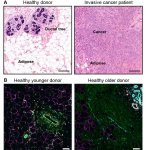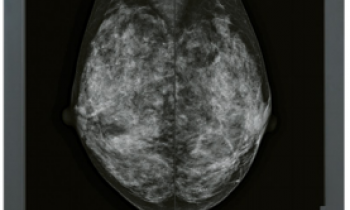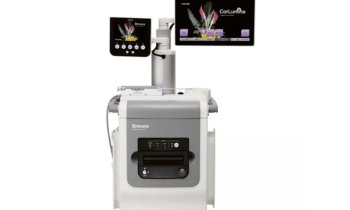
Image source: University of Turku
News • Fluorescent probe
New visualisation tool targets breast cancer dissemination
Cancer cell movement during metastasis is a dynamic process regulated by several different signals. However, the way cells receive, process and respond to these signals has been extremely hard to detect, but is made easier by a new visualisation tool.
In a new study led by Professor Johanna Ivaska and Dr James Conway, researchers at the University of Turku, Finland, have developed a new fluorescent probe to visualise signaling dynamics in moving cancer cells, which they used to uncover a new therapeutic possibility for limiting breast cancer spread. The researchers published theitr findings in the journal Nature Cell Biology.
“Signaling networks inside cells control everything from growth to movement, but visualising this in living cells requires new and refined methods," explains Dr James Conway, the lead researcher of the team, “I set out to see these invisible signals and came up with a new tool, which we call Illusia, to do just that.”
This type of cell-dynamics reporter [...] has transformed our understanding of what sorts of signaling are needed for cell movement
James Conway
Breast cancer patients who experience the transition from pre-malignant ductal carcinoma in situ (DCIS) to invasive ductal carcinoma (IDC) face a considerably poorer prognosis and metastatic disease is incurable.
The research team's work focuses on identifying factors that regulate metastatic movement of breast cancer cells, with the protein phosphatase Shp2, “Ship two”, emerging as a key regulator of metastasis through regulation of cancer cell interactions with the surrounding tissue. “Cell movement is essential for cancer cells to spread from the primary tumour to secondary sites. Even though this is widely recognised as the key step in cancer progression, there are currently no cancer therapies that block cell migration or invasion. Our research finds that drugs currently in clinical trials for blocking growth in other tumour types may also be effective in blocking breast cancer spread,” says Professor Johanna Ivaska, the Principal Investigator on the project.
Recommended article

News • Research into fat cells
Healthy adipocytes keep breast cancer at bay
Researchers have found a possible explanation as to why higher breast density and older age increase the risk of breast cancer. According to the experts, adipocytes play a vital role here.
The implications of this discovery extend beyond breast cancer alone and may help us to understand cancer cell invasion from solid tumours more generally.
"Researchers develop colour-based probes to detect different events in live cells, but this type of cell-dynamics reporter had not been available before. It has transformed our understanding of what sorts of signaling are needed for cell movement,” explains Dr Conway and continues “These probes often take on names from pop culture references. The lab came up with the name Illusia, drawing from an old Finnish story about a fairy that comes to earth from the rainbow. This gave our work a colourful twist, something we are all seeking in today’s world, as we strive for better treatments.”
The team is now exploring the therapeutic avenues that have opened up as a result of these recent findings.
Source: University of Turku
07.06.2025











